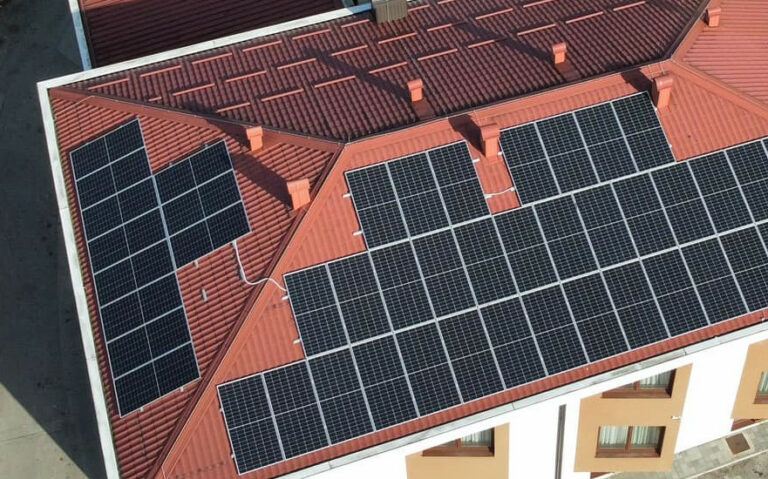Solar energy enters the world of energy with pomp. The big problem with enormous air pollution and decarbonization gives wings to renewable energy sources. Solar energy is easily affordable for ordinary users, in contrast to wind energy, whose investment is higher for average people.
Is solar mania swindling ???
Recent calls from banks to invest in solar have led to a significant decrease in the price of solar panels, which has accompanied this boom in solar energy. All this sounds good and probably is good (for the banks, for sure), but it is necessary to open your eyes well and look at all aspects, especially those that are written in small letters or should be read between the lines.
What the solar traders says
I am writing this text regarding the sentence of one of the sellers and installers of solar equipment: “We charge per kilowatt of installed power“. What is hidden behind this sentence? Seemingly nothing special. But we need to dive deeper into the analysis, and many things will become clear to us. The first and most basic one is: Will we get a kilowatt of electricity for a kilowatt of installed power ?
My answer is: NO ! And here is the explanation:
Standard test condition STC - what is behind ?
Solar panels are delivered with declared power but under the so-called STC (standard test condition). It is a laboratory procedure in which a solar panel is exposed to light energy per unit area of 1000 W/m2. In doing so, panel parameters are measured, and the most important are the short-circuit current Isc and open-circuit voltage Voc. These are the maximum magnitudes of current and voltage without resistance. These quantities are used for the construction of the current-voltage diagram of the I-V curve. From there, the optimal voltage and optimal current are read, which give the maximum power for the given panel at a point called Pmpt-Power: Maximum Power Point. Let’s not forget that we are talking about laboratory conditions that are unattainable in areas with a continental, moderately continental, or Mediterranean climate. These are theoretically possible in the Sahara region (for example), but they come with a second issue: a decrease in efficiency because of high outside temperatures.

Therefore, instead of STC, we read the more realistic parameters of the so-called NOCT (Nominal Test Condition), which are measured at a more realistic solar panel brightness of only 800 W/m2 (external temperature 20 C, wind speed 1 m/s). For example, for one quality Canadian Solar HiKu panel, the power drops from 430 W to 321 W (about 25%). And when it’s cloudy, count on irradiation of 200 W/m2 and less.

The incident angle is changiging every second
But that’s not all, either. Keep in mind that the solar panel is still lit, ideally at a right angle. You will not be lit perfectly, no matter how hard you try, because it is mathematically impossible. Even if the panel is placed with an ideal tilt to capture photons at right angles at noon (12 h) in the summer months, this angle will change by 1 p.m. By 3 p.m. Sunlight that deviates from normal incidence on the solar panel loses energy and cannot be used to initiate the process in semiconductors to emit electrons. It needs energy E= mc2 (*cos(phi)). And that angle : cos(phi) disrupts our plans to get guaranteed energy from the merchant. Conclusion: Incident angles change during the day, but that’s not all.
Wherever you find (a good) place, you plant the panel
This applies to the installation of panels on the roof structure. I have seen and already written about cases where solar panels were mounted on the east, west, and even the north side of the roof. The latter is already rude. The panels placed in the east will produce electricity until noon. Those placed on the west side after noon And those placed on the north It’s the same as if you were to grow sunflowers in the basement. Solar panels must, at all costs, be facing south as much as possible. If your roof faces more to the east than to the south or more to the west than to the south, you will not do well in terms of energy and investment. Also, take care of the shadow from the chimney. Do not mount the panel so that the chimney casts a shadow on it, because it will not work. Admittedly, all panels have diode protection for such situations so that they do not draw the surrounding current and overheat themselves, but they will not produce it either. At least not the partially shaded parts.
Surrounding by larger objects must be at a safe distance. Not on the south side anyway. The shadow of the surrounding buildings that are in the east or west is greater in the morning (that is, at sunset), so that it makes the normal production of electricity impossible. This is especially important for solar power plants. If the terrain is sloping, the situation can also be mathematically complicated. A favorable slope of the terrain is a fall from the north to the south. This natural cascade reduces the shadow in the winter months and thus the distance between the panels. In contrast, the slope of the terrain from south to north is unfavorable.

Another decoy: Bifacial solar panels
Special stories are bifacial solar panels. It sounds remarkable—a solar panel that has no “useless surface”. A panel that uses both sides to collect solar energy. Does the light come from all sides or only from the sun? Or is there some light radiating from the ground? Bifacial solar panels have a long history. They appeared at the same time as the classical ones. They are 20% more expensive than ordinary mono facials, and for that, they make much more electricity. Provided that they are placed in ideal conditions for them. That other side collects the reflected component of the light. The reflected component, next to the direct and diffused, is usually the smallest.
The degree of utilization of the bifacial panel depends on the height and angle of the installation, and especially on the environment that reflects light. Depending on the substrate, sunlight is reflected to a greater or lesser extent at a right angle, and the reflection coefficient depends on the substrate. Grass, for example, has a reflection coefficient of 0.26, while snow has 0.6. The height and angle of the bifacial panel setting are very important. In order to collect the reflected light component from the substrate, a certain height is necessary, a minimum of 4.2 m. In this case, the angle of inclination should be greater than 35 degrees. The ideal way of applying bifacial panels is for the canopies of open parking lots or any open canopies. It is important that the canopy be open on all sides to collect the reflected component. The substrate should be as light as possible, if it is concrete or asphalt, and painted white.
Conclusion
Using the SPAC application, we can calculate the realistic gain of electricity from solar. In the case of installation on the roof, it is necessary to enter the slope of the roof, its dimensions, its orientation towards the south, and select the nearest town and salt panel. After that, we get a bunch of data that we can use for further calculations (damaging shadow effect) or skip all those tables and see how real the current gain is. After that, we can choose the inverter, enter the electricity price, and we will get a complete report covering the annual electricity gain (income) and the investment price. You can see how to use the SPAC application here: And don’t forget: Before investing, consider everything carefully.


